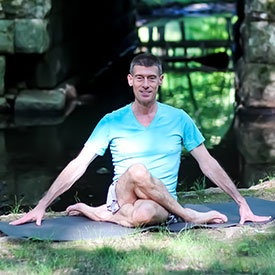 Shawn Galin, Ph.D., is a professor in the Division of Pulmonary, Allergy and Critical Care Medicine and the director of UAB’s Office of Standardized Patient Education (OSPE). Galin has led the OSPE, housed within the Center for Interprofessional Education and Simulation, since 2015. Standardized patients are people trained to perform in clinical training scenarios—portraying history, physical exam findings, and emotional states of real patients—providing students with key experiential learning in a controlled and safe environment.
Shawn Galin, Ph.D., is a professor in the Division of Pulmonary, Allergy and Critical Care Medicine and the director of UAB’s Office of Standardized Patient Education (OSPE). Galin has led the OSPE, housed within the Center for Interprofessional Education and Simulation, since 2015. Standardized patients are people trained to perform in clinical training scenarios—portraying history, physical exam findings, and emotional states of real patients—providing students with key experiential learning in a controlled and safe environment.
He is also an experienced yoga practitioner and instructor. He says he was first introduced to yoga in 2006 after a back injury left him searching for an alternative therapy for chronic back pain. He began his yoga journey practicing Ashtanga yoga, which follows a precise sequence of poses and is very physically demanding. Over time, he says he became drawn to vinyasa flow (or power) yoga, which is what he practices and teaches today. Vinyasa flow yoga incorporates many of the same postures as Ashtanga, but the order of the poses changes every time and is, in his classes, set to music.
To deepen his practice and understanding of yoga, Galin completed a 200-hour Yoga Teacher Training Program in 2012 and is now a registered ERYT-200 with the national Yoga Alliance. “People start a yoga practice for many different reasons, but the number one reason for most is stress relief,” Galin says. “First and foremost, yoga gets us out of our heads and into our bodies. When we shift our focus fromour buzzing, anxiety-laden thoughts, we enter a visceral, physical experience.”
Galin insists that yoga is for everybody (literally). “Yoga can be modified to suit all levels of physical fitness. It has been proven to lower blood pressure and increases strength and flexibility. It energizes our bodies and calms our minds. The word yoga means ‘to unite,’ meaning the whole body is working as one.” ~Jane Longshore